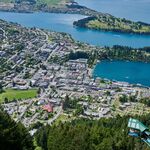felix123
Active Member
It begins to advance after its stop, but cannot proceed due to a red light.The video posted shows the test equipment stationary for an extended period of time. What evidence is there to suggest this means the service will run slower than it should? There are a million possible reasons why the rolling stock could be idling.
As for the actual signal priority, what I have heard is that a green light will only hold for the trains if that train is behind schedule. This doesn't seem like an optimal solution, but again this is not something that someone could figure out in any capacity from watching your linked video.
But as far as I know, there aren't any other videos posted showing it in normal operation since the change to full-speed testing began. We shall see.




